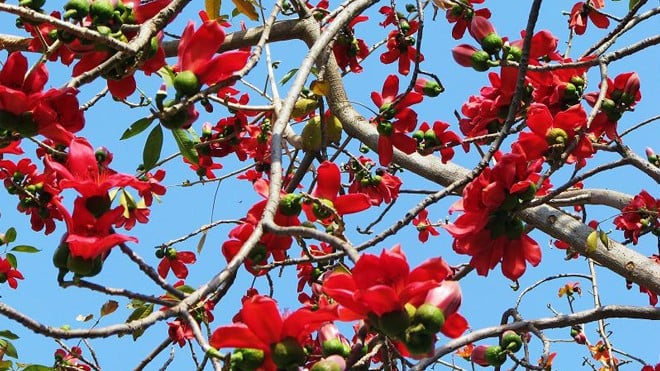
Keekar, kachnaar, gulmohar, amaltaas… the more the sun beats down the more the colours brighten and almost shine

Come summer and the casks of perfume and colours outpour in the flowering of trees.
And these are so many, more than we can make a count of or pause to look and smell, the faint fragrance exuding from them. The whole air is filled with a strange evocative smell of dry dust and flowers. Later, as the rains begin to fall, the smell turns from its bright crispiness to a more damp persistence. Though laden with the bouquet of fertility, it is very different from the dry aroma of early summer.
It does get compounded by the rain drops that fall on parched earth occasionally during the months in the run up to the sawan. But before that spring is ushered into the chamber of regeneration by the fruit trees, the apricots, the plums, the peaches, the apples, in the Punjab where they flower more and fruit less. They are meant for the mountains and cooler climes but as spring tapers off and the wheat fields turn to ripened gold, the flowers too join in the catwalk of hues, shades and strong smells.
The one to lead the parade is simbal with its buds appearing from nowhere on the leafless branches of its huge hulk as they flower after a few weeks, enrobing the atmosphere in painted colours of red and orange with lacy ungainly sinewy hairy bobs.
The keekar and the shareen, too, flower but exuding a faint fragrance that grows a little heavier at night. Close to its heels is the kachnar with its flashing of velvety texture and a more bland white. The atmosphere, already filled with fragrance, is saturated with the strong smell of the kachnar blossoms. They appear along with the full lush of leaves, stealing ample looks from among that thick foliage.
Read also: The time in Neverland
Then, as one looks around to savour all the colours and shades, it is the bottlebrush that hangs down from the willowy branches. As the vigour begins to wilt, the flame of the forest is ready to take over the baton, red pointed finger tips that appear like nails of kathakali dancers, whirling away in loud makeup and stylised gestures. The local version gul-e-nashtar is an apt term for a pictorial representation of the pointed petals that appear like narrow daggers -- nashtars.
As these petals begin to wither away and fall, the baton changes hands to the jacarandas -- with their very prominent purple with lingering shade of blue, they sway in the breeze that whips up a fair winnowing speed. The molsari then blooms, spreading its stronger aroma all round. The flowers are like pods in thousand, growing over each other and then dropping as quickly and frequently to the ground beneath, almost spreading a thick carpet of pinkish violet.
And then comes the time for the king of trees to burst upon the scene. Gulmohar is amazing in its colours of red and orange -- reds more than oranges as the huge trees flower before the leaves come out wondering about their sprouting themselves. Alas, the duration of flowering is very short, probably only a couple of weeks and that is why these are valued -- for abundance devalues.
The gulmohar trees are huge and in the shade of green, red, and orange offer an arcade to royalty. And, finally, as the sun beats down with greater vigour it is time for the amaltaas to take over and compete for the home stretch. As the heat sears, so do the amaltaas with ringlets cascading down the branches.
Read also: Editorial
The more the sun beats down the more the colours brighten and almost shine. The leaves are waiting to sprout but only after the wonderful attire of the ringlets have dropped off the body of the tree. An amaltas tree in full bloom is like gold being given its final burnish. It sooths and cools the eye as the temperatures soar above endurance level. At about the same time in synch with these the magnolia also blooms and riots its colours all round.
And then there are shrubs and bushes that open up with abandon. The motia, the raat ki raani and gulcheen so as not to be left behind and the air is drenched with their strong incense that are reminders of the land, its culture, and its smells.
And so the parade of colours continues as it merges into sawan and a totally new evocative tune begins to be hummed. In this abundance of colour and perfume, it is very easy to miss or overlook those that bloom and exude but don’t get noticed. But there are so many flowering by the wayside not carrying a common name or reference but happy to be there as long as they can last.